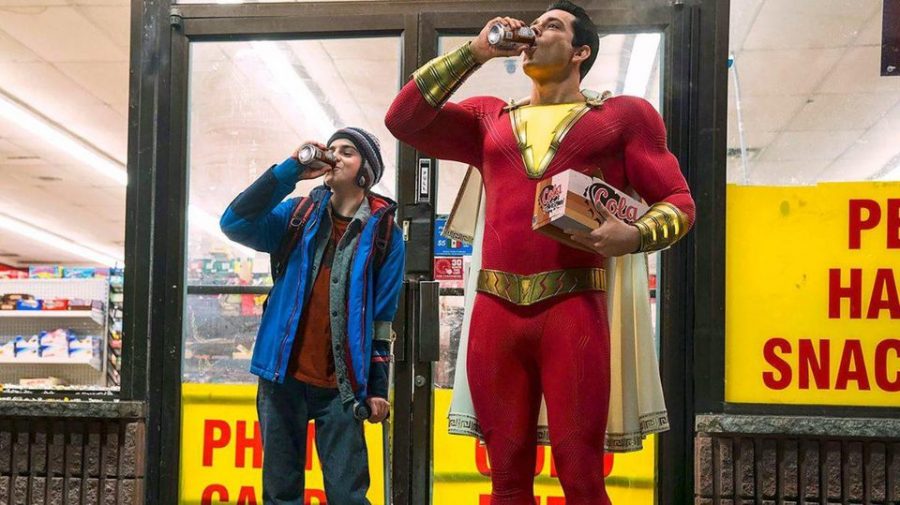‘Shazam’ shows DC can compete with, and beat Marvel at its own game
April 5, 2019
Shazam has always been a weird in-between hero of DC Comics ever since the character was purchased in 1972. He could never be as strong as Superman, yet almost all of his powers are the same as DC’s poster boy.
Shazam never needed to stand out against Superman through powers. What makes Shazam stand out is his potential for infectious fun, and Shazam, directed by David F. Sandberg, capitalizes on this potential with thunderous success.
Henry Gayden’s screenplay takes its time setting up the building blocks of protagonist Billy Batson’s origin, showing us his personality flaws as a runaway foster kid. He’s dejected, he’s a thief and he doesn’t take time to see the value in other people.
Advertisement
All of this is sold through Asher Angel, as Billy, and Jack Dylan Grazer, as Freddie, his disabled foster brother. They don’t crack jokes constantly; rather, when it would make sense in real life and almost all land perfectly. They have a real friendship onscreen of highs and lows that serve as the real heart of Shazam‘s strengths.
It’s refreshing to be so engaged in the basic human narrative that Shazam creates, which has gutpunch scenes of jealousy, loss and desperation. The surprising amount of emotional depth makes it all the more joyful when the movie gets to let loose with the entrance of Zachary Levi.
Levi’s innocent joy at his own abilities is contagious — every time Shazam learns a new power, or overcomes a new challenge throughout the movie you can’t help but be brought up to his excitement level. Most of his time as Shazam isn’t spent fighting the movie’s villain Dr. Sivana, but rather just goofing off with his newfound superhero status.
Dr. Sivana, played with terrific camp seriousness by Mark Strong, is written as a perfect foil to Shazam. While the idea of villains being mirrored versions of the heroes in movies like Dr. Strange, Black Panther or Ant Man isn’t original, Shazam twists the trope on its head.
Sivana is a painful look at how children can grow up bitter and hurt those around them, and the distinction between how he and Billy use their powers is a much better representation of differences between heroes and villains than any of the film’s contemporaries. It doubles as a message of hope for viewers, showing power is only as good as what you make of it.
While there’s an obviously large amount of CGI effects, Shazam uses them only when absolutely necessary. It makes the moments of large-scale superhero action meaningful and memorable, rather than having them all bleed together. The vast majority of the movie isn’t interested in excessive Snyder-destruction, instead showing how heroes are meant to stop such damage.
When it’s time to bring on the fights, Shazam still brings the big guns. The climactic battle between Shazam and Sivana is particularly engaging, with both characters utilizing as many of their moves as possible to take the other down. The creativity on display makes Shazam’s powers, more than just generic strength and speed, specific enough to leave you thinking about how cool it was for hours after viewing.
Advertisement*
If last year’s Spider-Man: Into the Spiderverse proved Miles Morales can stand toe-to-toe with Peter Parker, Shazam proves Billy Batson deserves a spot as one of the greats as well. It’s not just a good action movie like Aquaman, it’s not just Big as a superhero movie — Shazam is a cathartic exercise in humor, heart and childhood power-fantasy.
Arts & Entertainment editor Jeremy Brown can be reached at [email protected].
To stay up to date with all your southern Illinois news, follow the Daily Egyptian on Facebook and Twitter.
Advertisement









CB Photo • Apr 5, 2019 at 11:21 pm
So, 9.6734 out of 10.0?